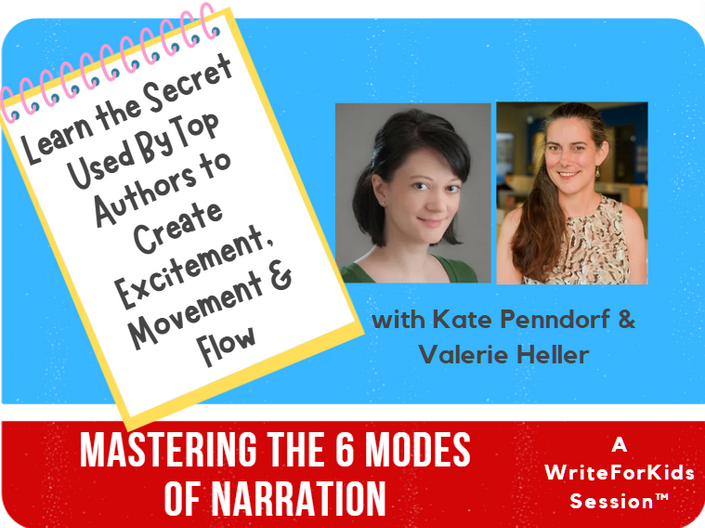
Mastering the Modes of Narration
"The most helpful webinar, workshop, etc. I’ve ever attended. I have been using the six modes of nonfiction but usually poorly. The discussion of implementing them was great!
- Lynn C.
"This has been a SPECTACULAR lesson. Thank you SO much. Extremely helpful. I will be re-watching multiple times, so that this bakes into my DNA!"
- Vivianne I.
The handyman you've hired shows up at your house and unloads his tools.
This is what you see:
"But wait," you say. "I have 10 things that need repairing and a wrench can't fix any of them."
"Sorry," he replies. "I only have wrenches. You're telling me there are other tools I can be using?"
It's fair to say that his career as a handyman will be spectacularly unsuccessful. And that you'll be calling another handyman.
OK, but what does this have to do with writing?
Actually, it has everything to do with becoming an excellent writer.
That's because great writers have multiple ways to tell a story and can shift from one to another seamlessly, assuring that every word in their manuscript works just they way they need it to.
These special tools are called MODES OF NARRATION
If you want the ability to keep readers glued to the page, drive emotion and drama and create unstoppable forward momentum, you need to learn how to use this technique.
And now you can.
Six Important Modes of Narration You Need to Know:
The quality of your writing is the direct result of the choices you make as a writer.
Many of these choices are familiar to you. First person point of view vs. third person. Present tense vs. past tense, and so on.
But what sets certain writers apart is their ability to tell their story in exactly the right way at exactly the right moment.
To do that, they shift seamlessly between these vital Modes of Narration:
- Narrative Summary condenses information quickly. For example, do readers need to watch your main character wake up, brush their hair, ask for breakfast, get dressed, and walk to school? Or can you simply write: They made it to school with 5 minutes to spare.
- Dramatic Action is the opposite of summarizing plot. Here, readers view what’s happening live on the page while witnessing events in real time.
- Dialogue allows readers to eavesdrop on what is being said in the moment.
- Description includes what a setting might look like at large (letting readers scan the room in an almost 360-degree fashion) or via a dominant impression (focusing in on one object or detail), as well as what another character looks like in terms of appearance or their facial expression.
- Reaction can be external (visually witnessed by the reader via something physical such as riding away on a bike or kicking the enemy), or internal (access given to the reader through the thoughts and feelings of a character).
- Factual Exposition are statements about how a system or the world works. For example, one character might state how to take down a wizard, or that a spell ends at midnight. These facts allow readers to believe your story is plausible.
Simply put, Modes of Narration are the the tools that make your writing come alive, and allow you to create at a much higher level.
Understand these Modes - and when to use them - and you'll be galaxies ahead of most other writers. In fact, you'll be writing the way your favorite authors have for decades.
In this comprehensive class you'll learn:
- What each of the 6 Modes of Narration is & how it impact a story.
- When to use each Mode, and how to intermingle Modes within a manuscript.
- How top authors use Modes of Narration at critical story junctures (with lots of concrete examples, from picture books to YA).
- How to strengthen your story by employing different Modes of Narration during the revision process.
- How to speed up or slow down the tempo of the scene by changing Modes.
- How Modes of Narration can add drama, emotion and mood to your scenes.
- Why certain Modes of Narration are particularly effective at adding tension and excitement.
- How to choose the right Mode to introduce flashbacks and backstory that keep the story moving ahead, not bog it down.
...and much more.
By the end of your Session with Kate & Valerie, you'll have a set of powerful tools at your disposal that will add tremendous vibrancy to everything you write.
(You'll also get a PDF handout to accompany the session that you can refer to while on your journey.)
"This has been AMAZING - easy to understand and extremely useful. Thank you!!"
- Judy C.
Your Instructor
Kate & Valerie are founders of the thriving community Much Ado About Writing.
Kate is a published middle grade author, writing coach and developmental editor.
Valerie is a writing instructor, workshop presenter and a lead writing coach for the Bloomberg Arts Institute in Baltimore.
Both are contributors to Children's Book Insider and active leaders in their regional SCBWI chapters.
"This has been SO practical. Can't wait to analyze during revision!"
- Karen I.